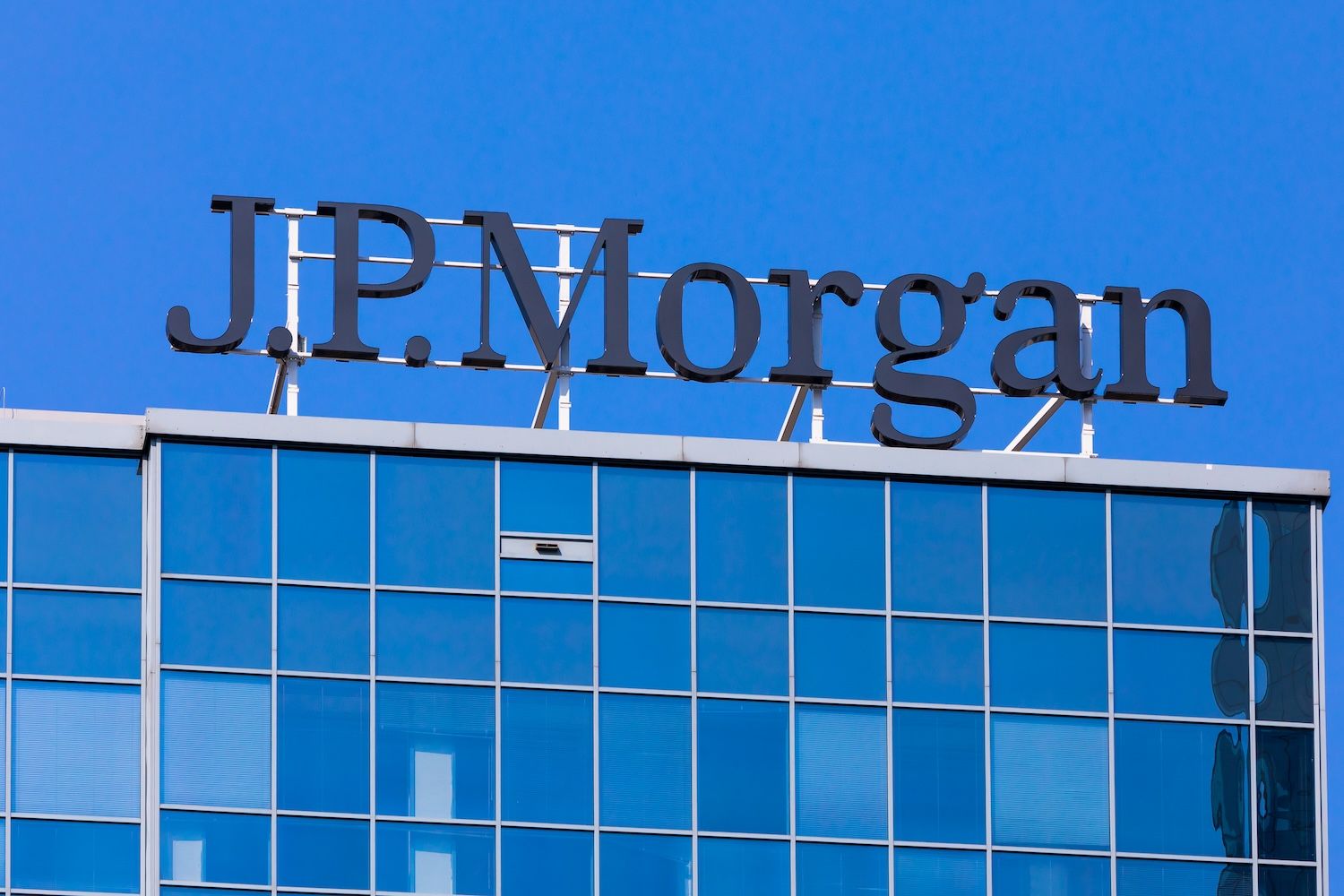블록체인 기술과 암호화폐는 전 세계 은행 및 금융 기관에서 점점 더 주목받고 있습니다. 주요 은행들이 암호화폐와 분산 원장 도구에 대한 파일럿 프로그램과 논의를 시작했으며, 이는 부분적으로 규제 명확성과 경쟁 압박에 의해 추진되고 있습니다.
시티 분석가는 "블록체인 채택은 진화하는 규제와 투명성과 책임에 대한 증가하는 중점에 의해 추진되고 있다"고 지적하며, 은행들이 안정적인 코인 같은 새로운 금융 상품 및 기존 시스템 현대화 노력을 주시하고 있다고 덧붙였습니다. 많은 은행이 백오피스 프로세스를 간소화하고 느리고 종이 기반인 시스템을 넘어가려는 블록체인을 탐색하고 있습니다.
2024년 연구에서 UBS는 자사의 블록체인 기반 결제 시스템(UBS Digital Cash)을 조합하여 교차국 결제를 "훨씬 더 효율적이고 투명하게" 만들기 위한 파일럿 프로그램을 보고했고, 이는 분산 원장 솔루션에 대한 업계 관심을 강조합니다. 동시에, 은행들은 암호화폐로의 "신중한" 첫 걸음을 계획하며, 명확한 규제 없이 소규모 파일럿 및 파트너 프로젝트에 우선합니다.
은행의 블록체인 관심은 공공 암호화 생태계뿐만 아니라 사설 원장 네트워크에도 걸쳐 있습니다. 많은 대형 은행이 JPMorgan의 Quorum 또는 IBM의 Hyperledger Fabric 같은 허가형 플랫폼을 개발하거나 공개 체인(이더리움 및 안정적 코인)을 주시하고 있으며, 예를 들어 Santander는 Ripple 기술을 사용하여 해외 결제를 위한 블록체인 기반 서비스를 시작했으며, 주요 미국 은행은 달러 명명된 안정적인 코인 공동 발행에 대해 조용히 논의했습니다.
중앙 은행들도 적극적으로 디지털 화폐를 개발하고 있으며, 상업 은행들은 중앙 은행 디지털 화폐(CBDC) 및 토큰화된 예금을 시스템에 통합할 준비를 하고 있습니다. 예를 들어, JPMorgan, HSBC, UBS 및 MUFG를 포함한 40개 이상 주요 은행이 교차국 결제를 위한 천장설 CBDC 및 토큰화된 은행 예금 테스트를 위한 BIS 주도 "Agora" 프로젝트에 참여했습니다. 업계 관찰자들은 블록체인의 매력이 "향상된 운영 효율성, 더 나은 데이터 보호 및 사기 감소"라는 점을 지적하지만, 사기 위험, 개인 정보 및 기술적 난제에 대한 도전과제도 강조합니다.

은행에서 사용되는 블록체인 및 암호화 기술 범위
은행들은 역할에 따라 다양한 블록체인 및 암호화 기술을 사용하며, 이는 사설 분산 원장부터 공공 네트워크까지 다양합니다.
공공 vs. 허가형 블록체인
많은 은행이 허가형(사설) 블록체인을 선호합니다. 이는 인증된 회원만 참여할 수 있도록 제한하며 접근과 개인 정보를 제어할 수 있게 합니다. 예를 들어, UBS의 교차국 "디지털 현금" 지불 파일럿은 인증된 참가자에게만 접근 가능한 사설 블록체인 네트워크에서 구축되었습니다.
허가형 플랫폼 (JPMorgan의 Quorum(기업 이더리움)이나 R3의 Corda)은 은행이 공개 데이터 노출 없이 원장 정보를 공유할 수 있게 합니다. 이와 대조적으로, 공개 블록체인(비트코인, 이더리움)은 비허가형이며 누구나 접근할 수 있는데, 이는 넓은 유동성을 제공하지만, 정보가 덜 제한적입니다.
은행은 일반적으로 암호화폐를 고객을 위해 보관하거나 토큰 발행을 위한 공공 네트워크를 사용하여 간접적으로 공개 체인을 사용하지만, 많은 금융 애플리케이션은 개인 정보 및 규제 요구 사항을 충족시키기 위해 허가형 네트워크를 통해 운영됩니다.
암호화폐 및 디지털 자산
은행들은 점차적으로 암호화폐를 서비스에 추가하고 있습니다. 여러 기관들이 비트코인이나 이더와 같은 주요 디지털 통화의 보관 및 거래 서비스를 특정 고객에게 제공하기 시작하였으며, 시장의 수요를 인식하고 있습니다.
예를 들어, JPMorgan, Goldman Sachs 및 Standard Chartered는 고객을 위한 암호화폐 거래 플랫폼이나 보관 서비스를 시작했습니다. 그러나, 은행들은 내부적으로 대규모 암호화폐 포지션을 보유하는 것에 대해 조심스럽습니다. 이는 가격 변동성과 규제 불확실성 때문입니다.
결과적으로, 일부 은행들은 안정적인 코인, 즉 법정화폐에 연동된 암호화 토큰에 주력했습니다. 많은 대형 은행들은 빠른 결제를 위해 안정적인 코인을 연구 중이며, 특히 JPMorgan의 "JPM Coin"은 은행의 자체 원장에서 법정화폐와 대등한 토큰을 즉시 이동시키는 데 사용됩니다. 2025년 중반, 미디어 보도에 따르면 Wall Street Journal은 JPMorgan, Bank of America, Citi 및 Wells Fargo를 포함한 미국 은행들이 규제된 안정적인 코인 발행에 대한 초기 논의에 있으며, 이러한 안정적인 코인들은 24/7 운영되고 달러로 보장되어 전통적인 와이어 시스템보다 더 빠르게 자금을 이동하도록 할 수 있습니다. 실제로, 은행에서의 블록체인의 약속은 안정적인 코인을 사설 원장과 결합하는 데 종종 관련이 있습니다: Santander의 블록체인 서비스는 Ripple의 인터레저 메시징(RippleNet)에 기초하여 지불을 라우팅하며, 은행들은 XRP를 직접 사용하는 것을 피하고 있습니다.
자산의 토큰화
토큰화 – 실제 자산을 블록체인에 표현하는 것 – 는 또 다른 주력 분야입니다. 은행들은 장기간에 걸쳐 유동성을 얻고 상시 거래를 가능하게 하기 위해 예금, 채권 또는 기타 증권을 토큰화하는 파일럿 프로그램을 시작했습니다. Citi는 토큰화된 머니 마켓 펀드 및 채권 실험을 보고했으며, 은행 업무 시간 이외에 24/7 전송을 가능하게 하기 위한 예금의 토큰화에 대한 파일럿이 진행 중입니다.
HSBC와 Northern Trust의 분석가들은 2030년까지 전 세계 금융 자산의 5-10%가 블록체인에서 토큰화될 수 있다고 예측했습니다. 무역 금융에서는 은행들이 신용장과 송장을 디지털화하기 위한 플랫폼을 지원하고 있습니다. 주목할 만한 사례로는 CaixaBank, Deutsche Bank, HSBC, KBC, Nordea, Rabobank, Santander, SocGen, UBS 등과 같은 금융 기관이 포함된 we.trade 컨소시엄이 수출입 자금 조달을 간소화하기 위해 Hyperledger Fabric 네트워크를 구축한 사례가 있습니다.
토큰화는 빠른 결산과 투명성을 약속합니다. Citi의 한 임원은 "기존의 중앙 집중식 시스템을 향상된 운영 효율성, 더 나은 데이터 보호 및 사기 감소를 위한 블록체인으로 대체하는 것"이라며, 대규모 시장 거래보다는 내부 유동성 관리 목적의 암호화 토큰 사용에 주로 초점을 맞추고 있습니다.
안정적인 코인 및 CBDC
사설 안정적인 코인 외에도 전 세계 중앙 은행들은 중앙 은행 디지털 화폐(CBDC) 프로젝트를 선도하고 있습니다. 상업 은행들은 이러한 발전을 면밀히 주시하고 있으며, 천장설 CBDC가 새로운 결제 레일이 될 수 있기 때문입니다. 많은 중앙 은행(ECB, 일본 중앙 은행, 미국 연방준비제도 등)은 CBDC 디자인 문서를 발표하거나 시험 프로젝트를 시작했습니다. 특히 BIS와 IIF가 주도하는 글로벌 파일럿(Agora)은 44개국과 수십 개의 은행이 토큰화된 CBDC와 은행 예금의 상호 운용성을 테스트하기 위해 참여하고 있습니다.
비슷하게, 스위스 국립은행의 Helvetia 프로젝트는 UBS와 Commerzbank를 포함한 여섯 개 은행과 함께 여러 디지털 채권 발행을 성공적으로 실행했으며, 프로그램을 확장할 의사를 보여주었습니다.
이러한 이니셔티브는 은행들이 암호화폐뿐만 아니라 디지털 법정 화폐가 교차국 및 대규모 가치 결제의 기반을 이룰 수 있는 미래를 준비하고 있음을 시사합니다. 신흥 시장에서는 중국의 e-CNY 파일럿이 이미 광범위하게 확장되었으며 (수 조위안의 거래), 아시아의 은행들은 이러한 플랫폼과의 통합을 진행 중입니다.
탈중앙화 금융(DeFi) 통합
탈중앙화 금융 - 공공 블록체인에서 스마트 계약 대출, 거래 및 결제 - 이 전통적인 은행들로부터 대부분은 독립되어 있지만, 점차 규제된 금융에서 주목받고 있습니다.
몇몇 은행들은 직접적으로 DeFi 프로토콜을 배포하지 않지만, 관련 아이디어를 허가형 컨텍스트에서 탐구하고 있습니다. 예를 들어, 은행들은 자동화된 유동성 풀과 토큰화된 크레딧을 사설 체인에서 연구하여 24/7 금융 제공을 가능하게 하고 있습니다.
예를 들어, JPMorgan의 Onyx 부서는 이더리움 기반 대출의 기관 사용 규칙을 구성하는데 기여하기 위해 MakerDAO의 거버넌스 보드에 참여했습니다. 한편, 대형 플레이어들은 하이브리드 모델을 개발하고 있으며, 디지털 자산 거래소와 수탁은행은 규제 감독 하에 온체인 서비스 통합을 위해 작업합니다. 본질적으로, 은행들은 효율성 향상을 위해 DeFi 혁신(예: 토큰화된 대출이나 유동성 스테이킹)을 주시하고 있지만, 실질적인 채택은 아직 초기 단계이며 철저히 검토되고 있습니다.

금융 기관에서 블록체인 및 암호화 채택의 장단점
블록체인은 금융 기관에 명확한 이점을 제공하지만 엄청난 도전 과제도 존재합니다.
장점
변경 불가능한 분산형 원장은 효율성을 크게 개선할 수 있습니다. 은행들은 거래에 대한 단일 "골든 레코드"를 생성하여 비용이 많이 드는 대조 업무를 줄이고 결산을 가속화할 수 있습니다. Accenture는 증권 처리 및 준수에 블록체인을 사용하여 은행의 인프라 비용을 30-50% 절감할 수 있다고 추정했습니다.
스마트 계약은 수작업 작업(결제, 신용 조회, KYC 등)을 자동화하고 감사 가능성을 약속합니다: 모든 거래는 암호학적으로 타임 스탬프가 찍히며 검증 가능하게 됩니다. 예를 들어, we.trade와 같은 거래 플랫폼은 신용장의 자동 실행을 가능하게 하여 서류 작업과 지연을 줄입니다. 은행들은 또한 블록체인의 보안성과 투명성을
강조합니다: 암호학적으로 보안된 분산 시스템으로, 설계가 잘된 블록체인은 조작을 방지하고 사기 탐지를 개선할 수 있습니다. JPMorgan은 JPM Coin이 "클라이언트의 상대방 및 결제 위험을 줄인다"고 강조하며 현금을 온체인에서 토큰화한다고 언급합니다.
또한, 새로운 암호화 도구를 통해 은행들은 기술에 친화적인 고객에게 매력적인 서비스(암호화 보관 서비스, 토큰화된 투자 상품)를 제공하며 새로운 수익 흐름을 열 수 있게 됩니다. UBS는 블록체인 파일럿에 대해, 기존 레일보다 "훨씬 더 효율적이고 투명하게" 결제를 만들기를 목표로 한다고 언급했으며, 이는 업계 전반에 걸쳐 공감되는 정서입니다.
단점
이러한 장점에도 불구하고, 은행들은 주요 단점에 대해 우려하고 있습니다. Content: Cryptocurrency markets remain volatile, raising concerns about asset price swings and liquidity.
규제 당국은 은행에게 "변동성, 법적 불확실성 및 유동성 리스크"에 주의하라고 명시적으로 경고했습니다. 실제로 많은 경영진(예: JPMorgan의 Jamie Dimon)은 암호화 네트워크에 내재된 자금 세탁 및 시장 남용 리스크를 언급합니다.
허가형 블록체인은 일부 리스크를 완화하지만 프라이버시와 탈중앙화를 희생할 수 있습니다. 은행은 주요 은행 시스템과 레거시 프로세스에 블록체인을 연결하는 것이 복잡하며, 엔터프라이즈 볼륨으로 확장하는 솔루션이 어려움을 겪고 있습니다. Citi의 분석가는 블록체인이 여전히 "잠재적 사기, 기밀성 문제 및 디지털 자산에 대한 안전한 접근"에 대한 취약성을 주요 리스크로 지니고 있다고 경고합니다.
또한 스마트 계약 버그나 프로토콜 중단이 서비스를 방해할 수 있는 운영상의 위험이 있으며, 많은 암호화폐 법률이 여전히 진화 중이기 때문에 법적 불확실성이 존재합니다. 마지막으로 고객 기대치도 요인이 됩니다: 고객을 새로운 블록체인 기반 경험으로 전환하는 데는 교육과 신뢰가 필요합니다. 따라서 은행은 블록체인의 잠재력을 이러한 규제, 기술 및 비즈니스 장애물과 균형 있게 맞춰야 합니다.

7 Blockchain and Crypto Technologies Used by Banks
Ripple (XRP)
리플의 국경 간 결제 도구는 은행 사이에서 주목받고 있지만, 리플의 네이티브 토큰 XRP의 채택은 제한적입니다.
리플은 두 가지 주요 제품을 제공합니다: xCurrent(메시징 및 결제 시스템)와 xRapid(XRP를 유동성에 이용). Santander의 One Pay FX 서비스는 리플의 네트워크(xCurrent)를 사용하여 은행의 자회사의 국제 송금을 빠르게 처리할 수 있습니다. 2016년 R3 주도로 Barclays, RBC, Santander를 포함한 은행 컨소시엄은 XRP를 활용하여 유동성을 재조정하는 데 성공했습니다: 은행은 법정 화폐를 XRP로 전환하고 다시 환전하여 즉각적인 국경 간 결제를 실행, 자금 비용을 최대 60% 절감할 수 있었습니다.
하지만 리플의 경영진은 "xRapid와 XRP가 현재 은행에서 사용되지 않는다"는 것을 인정하고 있습니다; 그러한 시범 프로젝트는 주로 송금 기업들이 참여했습니다. 일부 아시아 은행(SBI Ripple Asia를 통해)과 핀테크 업체들이 RippleNet 메시징을 통합했지만, 대부분의 기관은 XRP 보유를 꺼리는 상황입니다. 따라서 리플의 블록체인은 결제 효율성 및 24/7 유동성 테스트에 주로 사용되고 있으며, 은행들은 암호화폐의 명확한 규제를 기다리고 있습니다.
JPM Coin and Onyx by JPMorgan
JPMorgan의 Onyx 사업부는 JPM Coin 프로젝트와 Quorum 기반 네트워크를 주도하며 여러 블록체인 솔루션을 개발했습니다. 2019년 JPMorgan은 기관 고객 간의 즉각적인 정산을 위해 미 달러에 1:1로 페깅된 디지털 토큰인 JPM Coin을 출시했습니다.
고객이 은행의 원장에서 자금을 이동하면, 송신자는 JPM Coin을 건네고 수신자는 즉시 달러로 교환합니다. 이는 신뢰 없는 실시간 전송을 가능하게 하고 정산 위험을 낮춥니다.
JPMorgan의 Umar Farooq는 규제 감독 하에 이 기능을 책임감 있게 구축할 "독특한 기회"를 보고 있음을 설명했습니다. JPM Coin 외에도 Onyx는 보다 광범위한 현금 관리 블록체인 서비스를 구축했습니다. 특히 독일의 Siemens와 다른 기업 고객들이 현재 전 세계적으로 실시간 자금 이동을 위해 JPMorgan의 블록체인 플랫폼을 사용하고 있습니다. JPMorgan은 이러한 서비스를 스위스 및 기타 지역으로 확장하여 곧 기업 고객들을 블록체인 네트워크에 온보딩 할 계획입니다. 은행 간 측면에서, JPMorgan의 Quorum(허가형 이더리움 포크)은 수백 개의 은행이 참여하는 IIN(현재 Liink)를 뒷받침하며, 호주 및 캐나다의 파트너와 함께 새로운 국경 간 정산 시스템을 프로토타입하고 있습니다.
요컨대 JPMorgan은 민간 체인 솔루션을 완전히 수용했습니다: JPM Coin은 토큰화된 현금과 Onyx 플랫폼은 결제 및 거래에 사용되고 있으며, 여전히 공개된 암호화폐 소유는 지양하고 있습니다.
Ethereum / Quorum
이더리움은 선도적인 스마트 계약 플랫폼으로, 주로 허가형 변형을 통해 은행에서 사용되고 있습니다.
예를 들어 Quorum(JPMorgan이 개발)은 기본적으로 프라이버시 기능이 추가된 엔터프라이즈 이더리움입니다. Bloomberg에 따르면, ConsenSys가 2020년에 Quorum을 인수했으며, JPMorgan은 이를 오픈 소스로 지원합니다.
JPMorgan의 작업 외에도 은행들은 엔터프라이즈 이더리움 얼라이언스의 회원이며, 이더리움을 토큰화 시범 프로젝트에 사용했습니다. 주요 예시로는 은행 및 에너지 트레이더들이 설립한 Komgo 플랫폼이 Quorum을 사용하여 상품 무역 금융을 자동화합니다(KYC 승인 및 디지털 신용장의 발행). 또한 일부 국제 펀드 및 채권 발행자들은 이더리움 테스트넷을 사용했습니다: Societe Generale은 2019년에 이더리움으로 유가 증권 토큰으로 소매 채권을 발행했습니다.
JPMorgan 자체가 Ethereum의 잠재력을 공개적으로 인정하며 Quorum의 이더리움 기반을 언급했습니다. 실무적으로 보면, 은행들은 Ethereum의 성숙한 스마트 계약 기능과 큰 개발자 에코시스템을 평가하며, 준법을 유지하기 위해 허가된 규제된 환경에서 Ethereum을 배포합니다.
Hyperledger Fabric
Hyperledger Fabric(리눅스 재단이 만든 오픈 소스 블록체인 프레임워크)은 무역 및 금융 컨소시엄에서 광범위하게 사용됩니다. 프라이빗 네트워크를 위해 설계된 Fabric은 허가된 주체들이 공용 토큰 없이 스마트 계약을 실행할 수 있게 해줍니다.
주요 은행 사용 사례 중 하나는 we.trade였으며, 이는 Santander, HSBC, Société Générale, UBS, Nordea, KBC 등을 포함한 거대 은행들이 IBM과 공동으로 시작한 무역 금융 플랫폼입니다. we.trade의 네트워크는 Hyperledger Fabric을 실행하는 IBM의 블록체인 플랫폼을 기반으로 하며, 유럽 수출업체들이 최소한의 문서 작업으로 신용장을 자동화
하고, 선적을 추적하며 국경 간 결제를 관리할 수 있게 합니다. 공동 원장에 무역을 등록함으로써 we.trade에 참여한 은행들은 처리 시간과 위험을 대폭 줄일 수 있었습니다.
다른 은행들은 공급망 금융 및 준수 프로젝트를 위해 Fabric 또는 유사한 프레임워크를 사용했습니다.
예를 들어 Barclays 및 다른 은행들은 Hyperledger 기반 레포 시장 플랫폼에서 IBM과 협력했고, HSBC/ING는 다양한 무역 사용 사례를 위해 Hyperledger를 사용하는 컨소시엄에 참여했습니다. Hyperledger Fabric은 네이티브 암호화폐가 없지만, 은행들에 공동 벤처에서 자산을 토큰화하고 계약을 자동화하기 위한 안전하고 모듈화된 환경을 제공합니다(자동화된 합의가 있지만 채굴은 하지 않음).
R3 Corda
R3의 Corda는 금융 기관을 위해 맞춤화된 또 다른 허가형 분산 원장 플랫폼입니다. R3는 100개 이상의 은행 및 기관으로 구성된 컨소시엄에서 Corda 애플리케이션을 구축하고자 헌신하고 있습니다. 2017년, R3와 Barclays, HSBC, Citi, RBC, Santander 등 22개의 주요 은행들은 Corda에서 국경 간 결제를 위한 공동 프로토타입을 발표했습니다.
이것의 아이디어는 은행들이 공유 원장에서 몇 분 안에 결제를 정산하도록 하여 기존의 중계 은행 지연을 제거하는 것이었습니다. Corda의 아키텍처는 대량 거래와 당사자 간의 프라이버시 처리를 설계했습니다. 초기 R3 지원 프로젝트는 무역 및 자산 토큰화를 중점으로 하였지만 R3는 Marco Polo 네트워크(무역 금융용)와 Voltron 프로젝트(신용장용)를 시작했습니다.
여러 글로벌 은행들은 Corda 파일럿을 사용하고 있습니다: Natixis는 Corda의 국경 간 결제 이니셔티브를 "탐색 중"이라고 명시하며 분산 원장 결제의 가능성을 얻고자 한다고 언급했습니다. 최근 R3는 더 큰 상호 운용성을 위해 Solana와 같은 퍼블릭 블록체인과 통합하기 위해 플랫폼을 확장하고 있습니다.
은행에서 Corda의 장점은 산업적 지원(most large Western banks을 포함한 멤버) 및 다자간 워크플로우 중심입니다. 몇몇 중앙 은행들은 Corda를 사용하여 토큰화된 금융 시장 인프라를 시뮬레이션하는 파일럿 프로젝트를 수행하기도 했습니다.
Central Bank Digital Currencies (CBDCs)
CBDCs는 중앙은행에서 발행하는 법정 화폐의 디지털 형태로, 은행들이 이를 대비하고 있습니다.
전 세계적으로 거의 모든 주요 통화가 CBDC를 탐색하거나 파일럿을 진행 중입니다. 상업 은행들은 은행 간에만 유통되는 CBDC 테스트에 참여하여 결제를 혁신적으로 변혁하고 있습니다. 예를 들어, Atlantic Council은 모든 G20 국가들이 CBDCs를 연구하고 있으며 44개국이 2024년 현재까지 적극적인 파일럿을 진행하고 있다고 보고했습니다.
몇몇 은행들은 이미 이를 위한 레일을 구축하고 있습니다: 40개 은행(JPMorgan, HSBC, UBS, MUFG 등)이 참여한 G7/BIS “mBridge/Agora” 프로젝트는 토큰화된 CBDC 및 은행 예금을 결합하여 국경 간 송금을 테스트하는 플랫폼으로 프로젝트에 참여했습니다. 스위스에서는 Swiss National Bank의 Project Helvetia가 6개의 은행(UBS, Commerzbank 등)과 함께 도매 CBDC 플랫폼에서 디지털 채권 발행 및 정산을 진행 중입니다. 소매 측면에서는 유로존과 미국의 은행들이 ECB와 연준의 움직임을 기다리고
있는 상황입니다: ECB는 2026년까지 디지털 유로 프레임워크를 완료할 것으로 예상하며, 이후 CBDC를 통한 리테일 결제는 소비자 은행업을 변혁할 수 있습니다.
아시아에서는 이미 중국의 e-CNY 파일럿과 인터페이스를 만들어, 이는 현재 가장 큰 CBDC 실험으로 사업체들이 디지털 위안 결제를 수용하고 있습니다. 궁극적으로 CBDC는 은행이 신규 계정 및 신용 제공 방법을 제시할 수 있을 것입니다; 은행들은 소매 CBDC 계정을 보유하고, 도매 CBDC를 사용하여 대규모 거래를 즉시 정산하며 중앙 은행 예금을 줄일 수 있습니다.
Chainalysis and Crypto Compliance Tools
은행들이 암호화폐에 진출함에 따라, 블록체인 분석 및 준법 소프트웨어에 강하게 의존하고 있습니다.
Chainalysis, Elliptic 및 CipherTrace와 같은 전문 업체들이 blockchain transactions을 모니터링하고 불법 활동을 감지할 수 있는 도구를 제공하여 은행들이 자금 세탁 방지(AML) 규정을 준수할 수 있도록 돕고 있습니다.
예를 들어, Chainalysis의 모니터링 플랫폼은 금융 기관이 실시간으로 암호화폐 흐름을 추적할 수 있도록 사용됩니다.도구는 주소를 실제 세계의 실체와 연결하고, 랜섬웨어, 테러 자금 조달 또는 제재 회피를 감지할 수 있습니다. 은행의 AML 및 사기 부서는 이러한 플랫폼을 통합하여 고객의 암호화폐 전송 및 온램프 거래를 스크리닝합니다. 규제 당국이 암호화폐의 감시를 강화함에 따라 자동화된 준수 시스템이 필수적으로 됩니다. JPMorgan과 다른 대형 은행들은 이러한 분석 도구에 투자하거나 핀테크와 협력하여 모든 암호화폐 거래가 엄격한 KYC/AML 검사를 통과할 수 있도록 합니다. 본질적으로, Chainalysis와 그 동료들은 전통적인 은행이 불투명한 블록체인 데이터를 실행 가능한 준수 정보로 번역하여 안전하게 디지털 자산 공간에 진입할 수 있도록 하는 배관입니다.
마무리 소고
블록체인과 암호화폐는 금융 서비스를 재편할 준비가 되어 있으며, 은행은 실험을 넘어서 구체적인 배치로 이동하고 있습니다. 주요 글로벌 은행들은 이제 블록체인 기반의 국경 간 결제(UBS 디지털 현금)에서부터 토큰화된 증권(스위스 디지털 채권) 및 CBDC 네트워크(mBridge/Agora)까지 라이브 파일럿을 운영하고 있습니다.
서사가 바뀌었습니다: 경영진이 한때 블록체인을 과장된 것으로 일축했다면, 오늘날 그들은 비용을 절감하고 투명성을 개선할 수 있는 잠재력을 인정하고 있습니다. 그러나 채택은 여전히 선택적입니다. 은행은 일반적으로 공개 암호화폐에 의존하기보다는 무역 금융 및 현금 관리와 같은 분야에서 허가된 블록체인 솔루션을 배포합니다(we.trade, Quorum 및 R3 프로젝트에서 볼 수 있듯이). 그들은 또한 규제 및 통합 문제를 염두에 두어 신중하게 수용합니다. 현재로서는, 기존 시스템과 새로운 디지털 연계를 연결하는 “머니레고”에 초점을 맞추고 있으며, 이는 블록체인의 강점과 기존 은행의 인프라를 결합한 하이브리드 모델을 구축하는 것을 의미합니다.
향후 전망을 보면, 은행의 블록체인 환경은 심화될 가능성이 높습니다. 스테이블코인과 CBDC가 성숙해짐에 따라, 은행은 오늘날 종이 화폐를 다루듯 디지털 현금을 처리할 수 있게 되어 결제 및 고객 서비스를 변혁할 것입니다. 국경 간 결제 네트워크는 BIS 주도의 시험에서 시연된 40개 이상의 은행과 같이 토큰화된 예금을 포함하도록 진화하고 있습니다.
분석가들은 규제 프레임워크가 견고해지면서 더 많은 기관들이 자산의 토큰화를 통합하고 블록체인 기반 자본 시장을 탐색할 것으로 예측하고 있습니다. 앞으로 몇 년 동안 은행들은 예를 들어, 24/7 처리를 위해 주택 담보 대출이나 무역 송장을 토큰화하는 원활한 온체인 서비스를 제공할 수 있습니다. 그러나 은행은 혁신과 신중함의 균형을 계속 유지할 것입니다. 업계 보고서 중 하나가 지적했듯이, 2025년은 규제 당국과 기술이 잘 조화된다면 AI에서 최근에 목격된 영향과 유사하게 블록체인 채택이 본격적으로 시작되는 해가 될 수 있습니다. 한편으로 은행은 파일럿 실행 및 파트너십을 통해 디지털로 전환되는 배관에서도 금융의 중심에 여전히 남아 있을 수 있도록 인프라를 구축할 것입니다.

